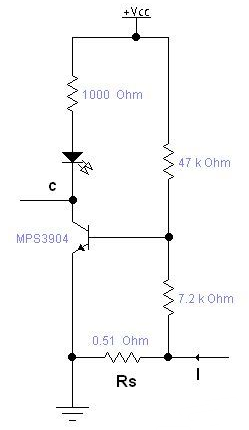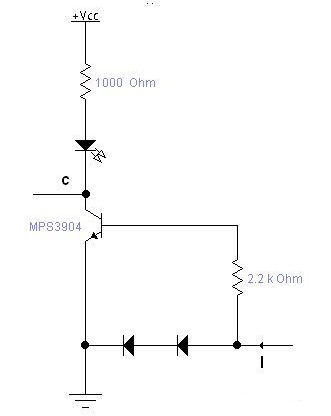Dot Matrix Led Display,Round Dot Matrix Led Display,5X7 Dot Matrix Led Display,1.2 Inch 5X7 Dot Matrix Display Wuxi Ark Technology Electronic Co.,Ltd. , https://www.arkledcn.com
Interpretation of Several Practical and Convenient Current Detection Circuit Methods
In power supplies and various electronic devices, current detection or feedback is often necessary. A common method involves using a series-sampling resistor to measure the voltage across it. However, this approach can be limited in accuracy, especially when dealing with small currents. To improve precision, engineers typically turn to more expensive instrumentation amplifiers. These solutions, while effective, may not always be cost-effective.
Here are some clever and inexpensive current detection circuits that can help you achieve better performance without breaking the bank.
1. **Transistor Current Detection Circuit**

Using a transistor for current sensing is a simple yet effective technique. Instead of directly turning the transistor on and off, you can use its base-emitter junction to detect current flow. When the current is low, a larger series resistor is needed, which can waste significant voltage. The circuit shown above uses a smaller resistor and allows for adjustable sensitivity by varying the base resistance. This design is ideal for applications like battery chargers, where detecting the presence or absence of charging current is essential.
2. **High Sensitivity Current Detection Circuit**

This circuit utilizes two diodes for current sampling, offering high sensitivity and a wide dynamic range. It's particularly useful in high-power or high-voltage systems. However, one drawback is that it requires about 1.4V of voltage drop across the diodes, which might not be suitable for all applications.
3. **TL431 Current Feedback Circuit**

The TL431 is an affordable and widely used component in switching power supplies. Its reference voltage is 2.5V, making it suitable for feedback loops. However, traditional implementations often require a large sampling resistor, leading to unnecessary voltage loss. In the circuit shown, two TL431s are used to enable precise current feedback with a smaller sampling resistor. If a voltage feedback network is already in place, the U3 voltage feedback circuit can be connected accordingly.
These circuits demonstrate how creativity and smart design can overcome the limitations of standard components, offering cost-effective and efficient current detection solutions. Whether you're working on a charger, power supply, or any other system requiring current monitoring, these ideas can help you achieve better results without relying on expensive parts.